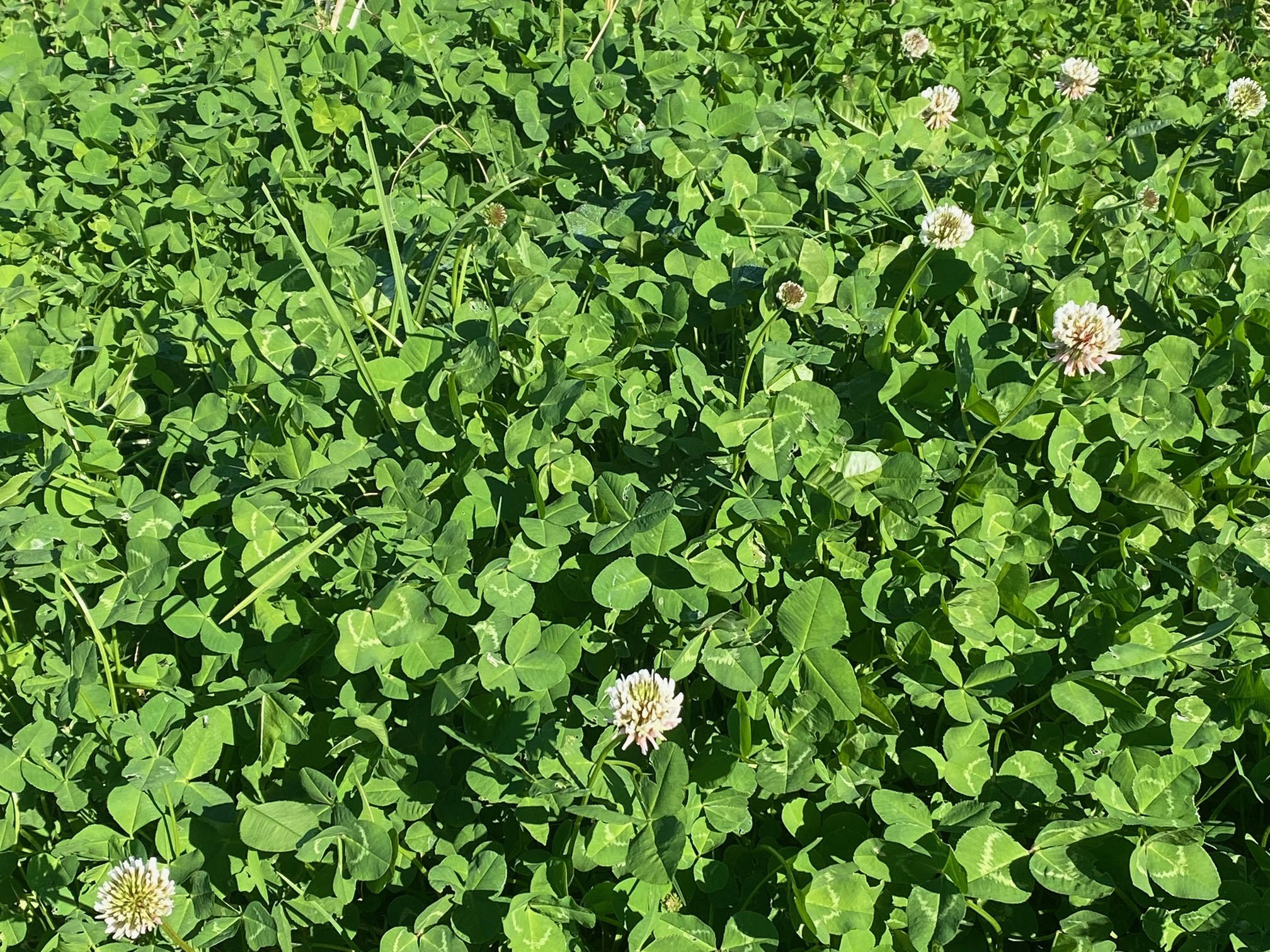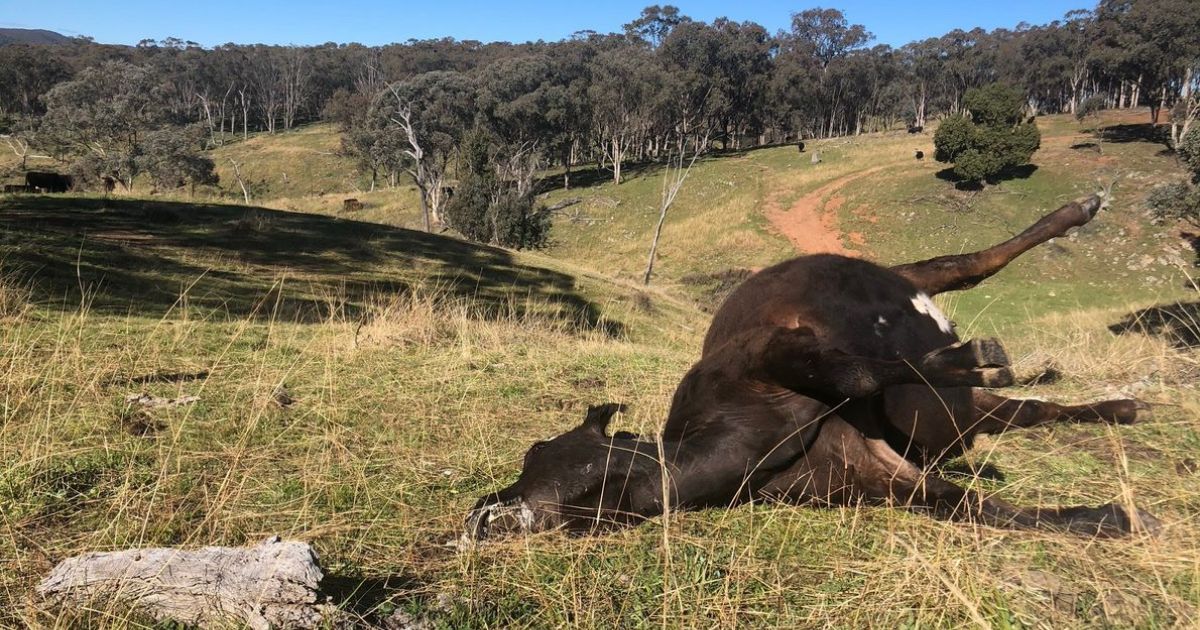Bloat
What causes bloat in livestock?
Bloat occurs when ruminates (particularly cattle) consume lush, immature and rapidly growing legumes, such as clover, medics, and lucerne, or grasses that are high in soluble carbohydrates and protein, and low in fibre.
This lush green feed is broken down quickly within the rumen, which does one of two things;
- The natural foaming agents within these plants causes a stable foam to build up within the rumen.
- The rapid digestion of feeds causes a drop in the rumen pH and a proliferation of gas-producing bacteria.
Ruminant animals produce a large volume of gas during the normal digestion process. This gas is either belched up or passed through the gastrointestinal tract. Bloat occurs when something interferes with gas escape from the rumen.
When foam and gas are mixed together in the rumen, the gas becomes trapped within the foam and cattle are unable to eructate (burp) up the gases. The build-up of gas in the rumen causes it to expand until it can no longer do so. Death from bloat occurs due to pressure from the rumen compressing the heart and lungs, causing the animal to suffocate.

When does bloat commonly occur?
Bloat can occur at any time through the year but is most common in spring. Good rains, mild daytime temperatures coupled with cool, moist nights will promote vegetative plant growth and increase the risk of bloat. Symptoms can develop in less than an hour after introduction to a high-risk paddock, but bloat more often develops after a day on immature pasture.
What are the signs of bloat in cattle?
Cattle with bloat may display the following signs:
- distention of the abdomen on the left side
- appearing distressed / bellowing
- lying down and getting up frequently
- staggering
- rapid breathing, often with the mouth open
- strain to urinate and defecate
Due to the rapid nature of bloat, affected stock will die suddenly. Often there will be no clinical signs observed, with stock found dead on their side. An autopsy examination by your vet can be used to help confirm the condition, which can sometimes present very similarly to pulpy kidney.

How to prevent bloat?
Prevention of bloat can be difficult and often unreliable. Careful grazing management, the use of hay and roughage and various anti-bloat preparations such as licks are the mainstays of current bloat prevention. If conditions are very high risk on your property, you might consider a combination of preventatives.
Pasture management
Grazing management should aim to reduce the rapid consumption of the highly digestive component of high-risk pastures. This can be achieved by holding of grazing until the pasture matures or by restricting their access by:
- limiting grazing time
- implementing strip-grazing
- filling animals on hay or roughage prior to and whilst grazing lush pastures.
Bloat control agents
There are currently three types of preventive bloat control agents available including:
- Anti-foaming agents: e.g. bloat oil, tallow
- Detergents: e.g. teric – alcohol ethoxylate, both of which aim to break down foam.
- Rumen modifers: e.g. monensin, to reduce the population of gas producing rumen bacteria.
These products can be administered to stock in a variety of ways e.g., oral drenches, bloat lick blocks, additives to feed etc. Provided these products are consumed daily and in adequate amounts, they can be a reliable way of controlling bloat. However, ensuring that every animal receives a protective dose can be difficult, costly and often time consuming. Bloat capsules are currently not on the market.
Treatment of trough water with a teric-based bloat oil formula is a good option provided the water supply is static.
Bloat Oil can also be sprayed directly onto pastures and may be an option where strip grazing is used. However, Respraying may be required after heavy rain.
Pulpy kidney and bloat are often interchangeable – so before grazing your livestock on lush pastures ensure that they are fully vaccinated. Keep in mind that many of the commercial vaccines have a pulpy kidney protection period of only 3-months under high challenge situations.
How to treat cattle with bloat?
Mildly affected cattle can be treated orally with an anti-bloat preparation. Bloated animals showing signs of distress need immediate veterinary attention. A stomach tube may be used to relieve the gas build-up and delivery anti-foaming agents directly into the rumen. After dosing, keep the animal moving to encourage the preparation to mix with the frothy rumen contents.
Animals that are severely bloated and distressed need rapid relief and veterinary attention. Insertion of a wide-bore trochar and cannula into the rumen to release gas and froth, and deliver an anti-bloat preparation may be required.
How to treat sheep with bloat?
Bloat in sheep is less severe than in cattle, however bloat often occurs with pulpy kidney, so it is important to vaccinate before putting sheep on to lush pasture. Dorpers and cross bred lambs are more prone to bloat. Treatment for sheep is the same as for cattle with anti-bloat preparation at one-fifth of the cattle dose.
To discuss how you can manage bloat, get in touch with a District Vet in your region by contacting your nearest LLS office on 1300 795 299.
Early warning app to help prevent bloat
The Bloat Alert app uses community based reporting to help farmers prevent bloat in their cattle. It relies on users reporting in occurrences of bloat in their cattle which are then displayed both on a heat map and in a list format for other users to view. Bloat Alert only reports the postcode where cases have occurred, not the exact location, so producers can report cases to assist fellow farmers without being personally identified.
Download the Bloat Alert app for iPhone or Android.
Adapted from articles by district veterinarians Eve Hall and Georgia Grimmond.